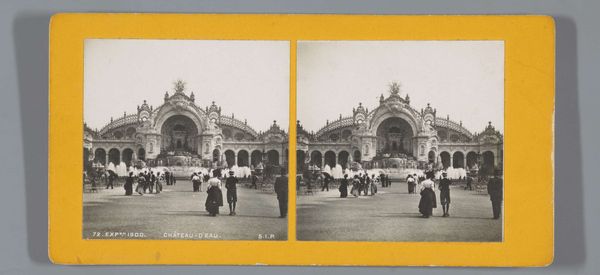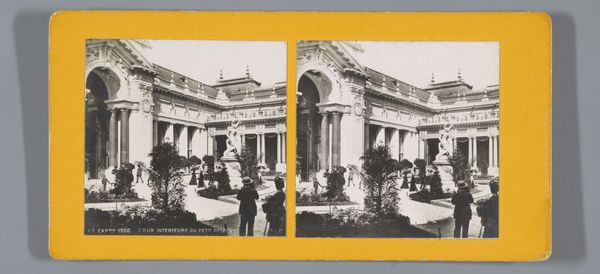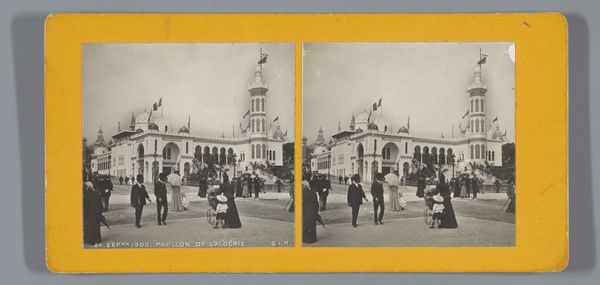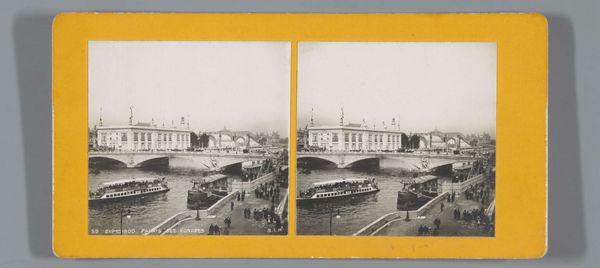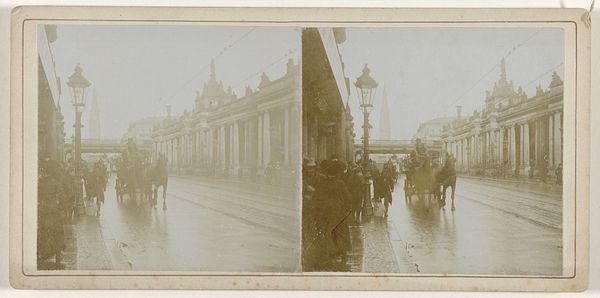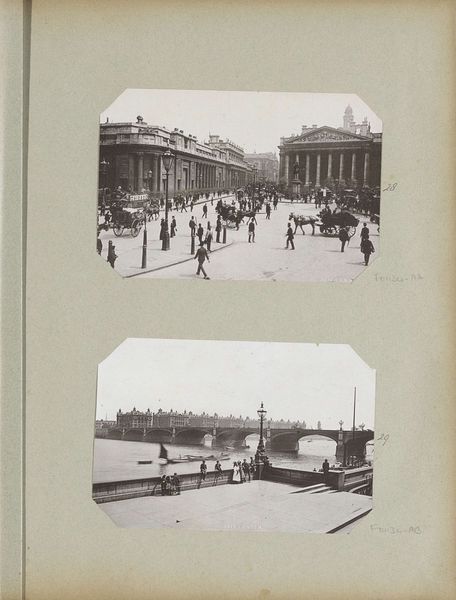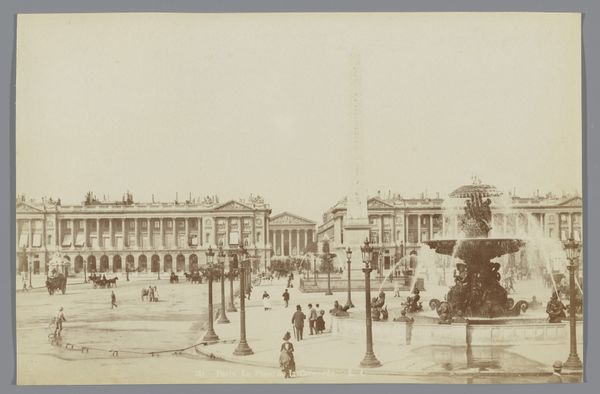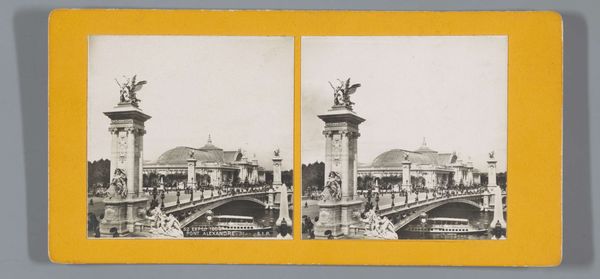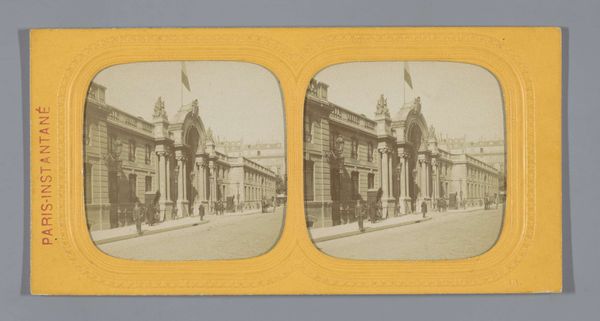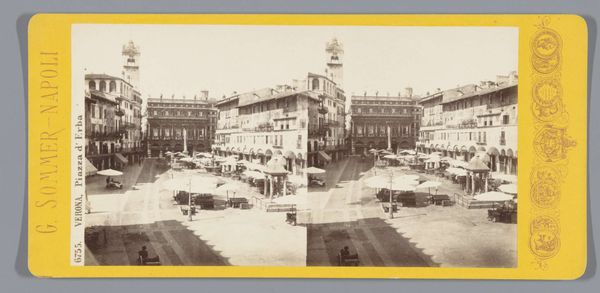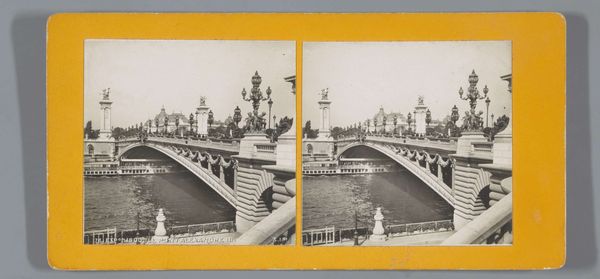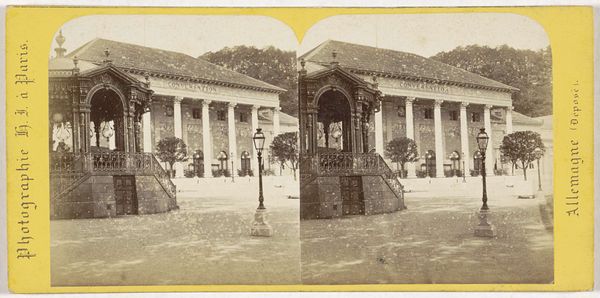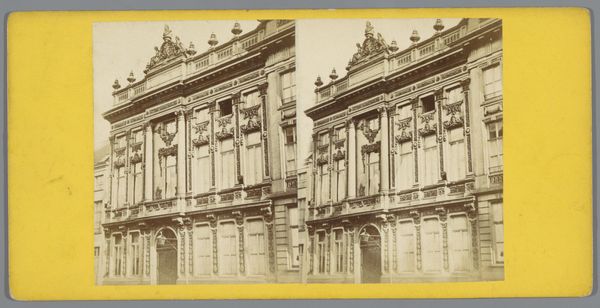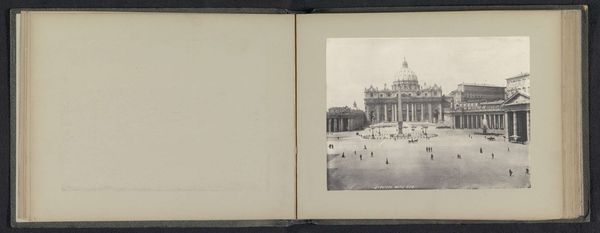
Dimensions: height 87 mm, width 176 mm
Copyright: Rijks Museum: Open Domain
Curator: This is an albumen print titled "Grand Palais tijdens de Wereldtentoonstelling van 1900", taken in—you guessed it—1900. The anonymous photographer captured the magnificent Grand Palais during the World's Fair. Editor: The immediate impression is one of cool monumentality, wouldn’t you agree? The light, even with the visible detail, evokes a sort of placid, optimistic grandeur that makes it hard for me to believe what would come with the next century. Curator: Yes, it definitely projects that optimistic veneer! Let’s delve a bit into the process. Albumen prints like this one were immensely popular at the time, owing to their crisp detail and relatively easy production. This one has a distinctly manufactured element—see the yellow border. They were designed for mass consumption. This material reality reflects a desire to portray Paris as a beacon of modernity. Editor: Absolutely, and that commodification speaks volumes about power dynamics in the late 19th century. It presents an idealized image of Paris, one built, literally and figuratively, on exploitation. The World's Fair was not just about progress; it was also a spectacle of colonial might, and even orientalism. Consider who was included, who was excluded, in this vision of modernity? This image elides all of that conflict and marginalization under the auspices of imperial success. Curator: I’m so glad you pointed that out. The way the space itself was structured for the fair - the accessibility, the class dynamics, all were deliberate constructions. Thinking of labor, who built the Grand Palais and under what conditions? The photograph conveniently overlooks all the construction workers. This photo's surface is deceptive because underneath it lies a much messier socioeconomic reality. Editor: Precisely. What’s fascinating too is the way the very architectural language of the Grand Palais echoes Roman classicism, consciously legitimizing French imperial ambitions. The architecture itself is a statement. And that is preserved in an albumen print. This allows us to investigate the relationship between architecture and photographic technique in projecting a particular socio-political narrative. It is more than a mere image; it’s a cultural artifact loaded with historical context and intentional framing. Curator: By understanding the materials and mode of production, as well as acknowledging that broader context of social tensions and colonial expansion, we gain a deeper understanding of what this image chooses to reveal – and, importantly, what it conceals. Editor: Ultimately, viewing this as both document and fabrication, helps us appreciate the complexities inherent in the story of Paris, its ambitions, and its enduring power.
Comments
No comments
Be the first to comment and join the conversation on the ultimate creative platform.
